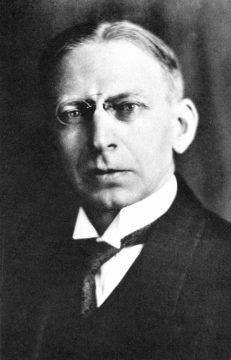by Eric Bies
 In 1930, the German anthropologist Berthold Laufer published a monograph on the phenomenon of people eating dirt.
In 1930, the German anthropologist Berthold Laufer published a monograph on the phenomenon of people eating dirt.
A sinologist by training, Laufer’s study—“the evaluation of the whole question of geophagy”—begins with a trip through Ancient China, where for hundreds of years Han, T’ang, and Sung soil disappeared down eager gullets. From there, the globe: he tours Malaysia, Polynesia, Melanesia, Australia, India, Burma, Siam, Central Asia, and Siberia, stopping off among Persians and Arabs before continuing on to Africa, Europe, North America, Mexico, Central America, and South America. His conclusion? People all over have eaten dirt for a very long time … And yet rarely does one find a Malaysian or an Indian, a Siberian or an Arab, an African or a Mexican swallowing down the plucked clod raw. Almost always water is added to the earth first: in the Yun-ho Mountains, white clay “is mixed with water and beaten on a stone” before it is eaten; in the Philippines, “it is a common thing to mix the earth taken from the nests of ‘white ants’ with water”; in Nishapur, where Omar Khayyam penned his Rubáiyát, the clay is softened with “rose-water and a little camphor,” then shaped into loaves.
Of course, few have particularly prized the practice Laufer describes in all its inventive renditions: as when the occupants of Leningrad remained under unremitting siege for 872 days and turned, in the interest of evading death by starvation, to their suppers of book glue and snow, so the chronically hungry everywhere and forever have tended to eye the lumps of mud out back with all the despairing expediency of a cratered gut.
Even now it remains common practice in the poorer parts of places like the Subsaharan to attempt to recuperate certain vital minerals as iron, calcium, and zinc, including incidental traces of vitamins B and C, through a sometime diet of dirt.
Curiously, the fates of the thousands of scurvy-stricken sailors who had had the bad luck of plying their trade before the findings of James Lind’s citrus experiments caught on could possibly have been recast (in the direction, say, of retaining the uniformity of their unsplit skin or the molars in their mouths) by the simple victualing of a few hogsheads of good loam
In 1741, on an island of cold stone and stunted grass, where the bitter surf tossed crystals of ice over the hard-packed shore, the Danish explorer Vitus Bering sat and watched the otters play. Fourteen years earlier, captaining a ship for the Russian Navy, he had made the discovery of a narrow strait in the North Pacific. The funding bodies of this, his second expedition, hoped that he had opened an unobstructed passage to some Further North. If he had, then the grand prospect of filling in the world’s maps, which had long yielded up great blotches of blanks about every reach more Arctic than the next, was his.
 Konrad Bayer’s little-known novel of fragments, The Head of Vitus Bering (1947), presents a collage of the last leg of that voyage. It is, in equal parts, a captain’s log-book, a natural philosopher’s journal, and an unraveling man’s racing thoughts: it is a hodgepodge of melancholic considerations, theories of navigation, and bodily traumas; its byways speak of hats, birds, shipboard foodstuffs, and repetitions (or recurring visions) such as: “at night the seafarer saw small flames like stars on the sea’s surface, often a fiery tail followed the ship and marked the way the ship had taken. often too the whole sea appeared to be aflame, as far as the eye could see, and the ship sailed through a sea of fire”—an amazing image, no doubt, and an inversion of another: the Santa Maria, returning from her first trip to the West Indies, gliding over a midnight sea that glowed with vast meadows of phosphorescent sargassum.
Konrad Bayer’s little-known novel of fragments, The Head of Vitus Bering (1947), presents a collage of the last leg of that voyage. It is, in equal parts, a captain’s log-book, a natural philosopher’s journal, and an unraveling man’s racing thoughts: it is a hodgepodge of melancholic considerations, theories of navigation, and bodily traumas; its byways speak of hats, birds, shipboard foodstuffs, and repetitions (or recurring visions) such as: “at night the seafarer saw small flames like stars on the sea’s surface, often a fiery tail followed the ship and marked the way the ship had taken. often too the whole sea appeared to be aflame, as far as the eye could see, and the ship sailed through a sea of fire”—an amazing image, no doubt, and an inversion of another: the Santa Maria, returning from her first trip to the West Indies, gliding over a midnight sea that glowed with vast meadows of phosphorescent sargassum.
In 1741, on an island of cold stone and stunted grass, where the bitter surf kept busy varnishing the jeweled shore, the Danish explorer Vitus Bering sat and watched the cormorants dive for turbot. Up in the sky, wherever it was, walls of freezing mist floated through the air, as down inside his skull words like alabaster and cream crumbled and splat. Two days prior, his ship (the St. Peter) had run aground. Two weeks prior to that his gums had begun to turn blue. Presently, blood poured forth from his nose, staining the snow between his legs, and the stain steamed redly. For now he felt lightheaded, but before long his faculties would leave him completely. Horrifically, his eyes would drop from their sockets; the last tooth would fall from his mouth, the nerves curling back like the broken strings of a violin.
Apart from its scurvy-ridden hallucinations, the strangest feature of Bayer’s strange book is its index, which runs to roughly the same length as the story it seeks to supplement. “Seeks” because each entry, if it does correspond to something anterior, does so with all the tenuousness of abstract painting. Clipped, fragmented, there are no page numbers referenced and, far from being organized alphabetically, each entry seems to march out like a sleepwalker: following a sleepwalker’s logic, a sleepwalker’s itinerary. One draws a thumbnail life of Bering, another glosses St. Vitus’ Dance, a third broaches the so-called “sacred illness” of epilepsy, and tying them all together is the anthropology of shamanism. (The name of Mircea Eliade, a leitmotif, rings out again and again.) Here is the final entry:
in any case, if we set aside the ornithological symbolism of protohistorical china, the first man whom tradition credited with attaining the power to fly was the emperor of the shun (2258–2208 according to chinese chronology).
Its source? The Prehistory of Aviation, another Laufer monograph.
Whether he was writing in German, French, or English, about jade, agate, fingerprints, potatoes, or petroglyphs, Laufer couldn’t help himself: he wanted to write about China. One of his most arresting works charts the history and process of cormorant domestication in China and Japan. He writes of the specialists who tamed these aquatic birds and taught them to fish on their behalf; how, refusing to don gauntlets (or anything like them), their relationships smacked less of the falconer’s dominion than the father’s doting; how for hundreds of years the fish seized by their birds’ long, thin beaks fed families who might otherwise have turned to munching mulch.
Though Vitus Bering successfully mapped the entire Russian coast of the Sea of Okhotsk on his second, fatal expedition, the shape of the large island of Sakhalin remained imperfectly understood. Had he stopped there with his cartographers to do a bit of overland exploring, he would have encountered the island’s indigenous population, and had he encountered them, it is likely that they would have prepared him a special meal. According to Laufer, the Gilyak people liked nothing better than to cook up a “gluey broth of fish-skins, seal’s fat, berries, rice, and sometimes of minced dried fish, being mixed with dissolved white clay.” The dish was a favorite for treating guests.
